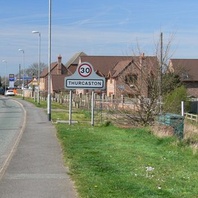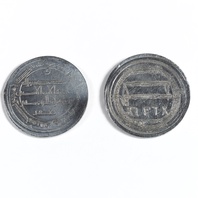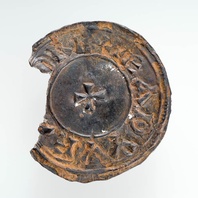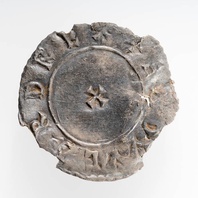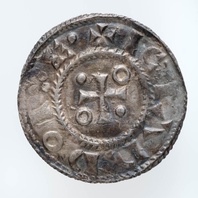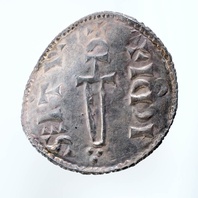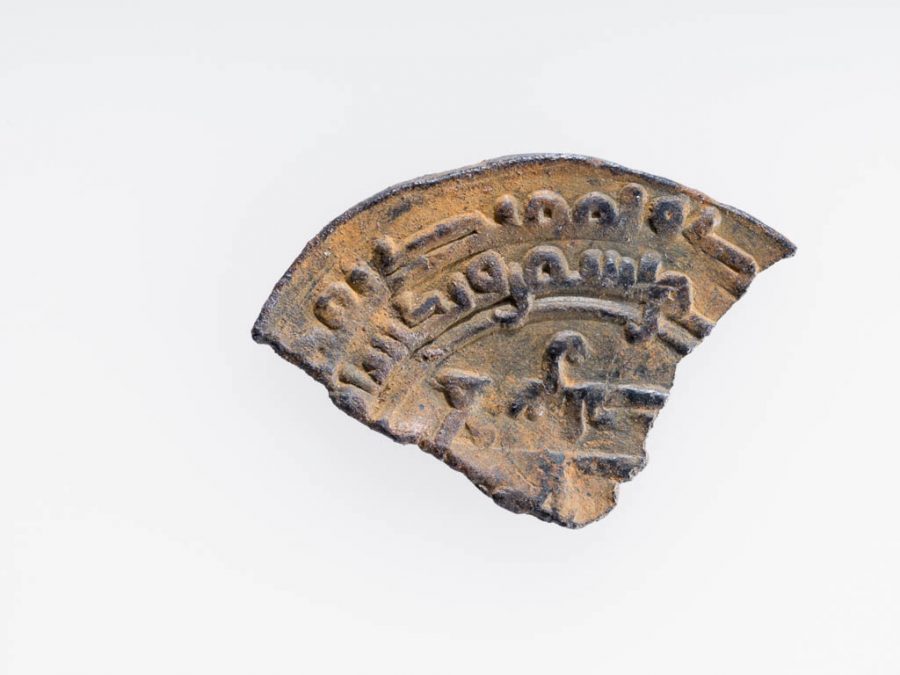
Description
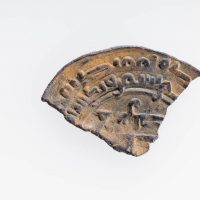
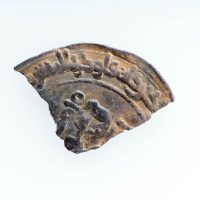
Samanid Dirham Fragment (CM.840-2002)
A fragment of a silver Samanid Dirham found in Thurcaston, Leicestershire
This is a silver dirham which was minted during the reign of the Samanid ruler Akhmad Ibn Ismail (907-14) or Nasr ibn Ahmed (914-43) in Samarkand. The dirham was a unit of weight used across North Africa, the Middle East, and Persia, with varying values which also referred to the type of coins used in the Middle East during the Viking Age. These coins were extremely prized possessions not only for their silver value but as a way of displaying ones wealth, status, and vast trade connections. Millions of Arabic Dirhams would have been imported throughout the Viking world and are mostly found in hoards.
Arabic coins are especially useful for dating sites, because they carry the date when they were minted. This permits precise dating where the part of the coin with the date survives, whereas European coins can only be dated to the reign of the ruler depicted on them. In western descriptions of these coins, the Arabic dates found on the coins are usually listed in square brackets, as above, and the European equivalent is listed after it.
This coin was part of a hoard of twelve coins found at Thurcaston between 1992 and 2000. The coins are Anglo-Saxon, Arabic and Viking issues, and show the diverse and wide-ranging contacts between societies at this time. The hoard was probably deposited c.923-925 CE, approximately five years after Leicester had been retaken by Mercia (c.918 CE). They indicate that a bullion economy was still operating in the Danelaw as late as the 920s. This suggests that the reconquest did not manage to institute Anglo-Saxon practices such as a monetary economy immediately.
Object Type
- Coin
Date
- circa 907 — 943
Style
Ascribed Culture
Original/Reproduction
- Original
Material
Collection
- Viking Objects
Current Location
- The Fitzwilliam Museum, Cambridge
Keywords
- Arabic, coin, Currency, Danelaw Saga, dirham, Economy, Fitzwilliam_Museum, Leicestershire, silver, Thurcaston hoard, trade
Further information
You can see the original at The Fitzwilliam Museum, Cambridge.
This object is related to
Thurcaston, Leicestershire.
Find out about Thurcaston, Leicestershire.
Acknowledgements
© The Fitzwilliam Museum, Cambridge
References

